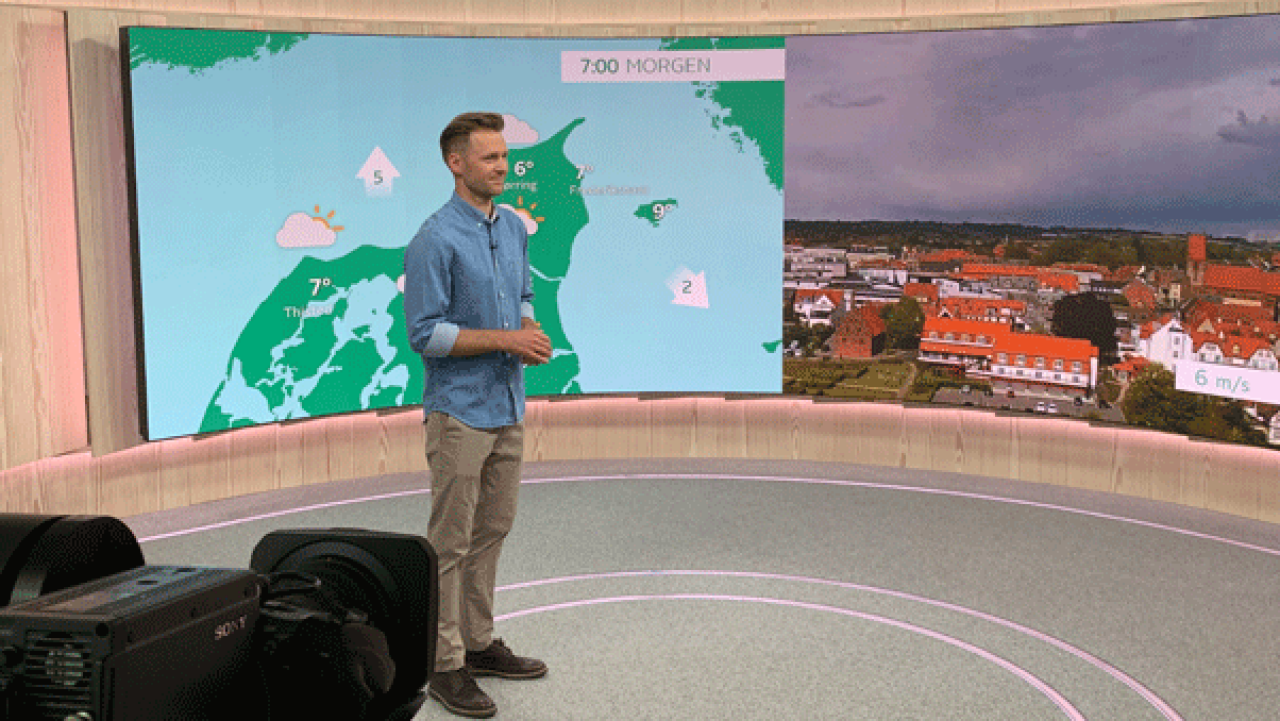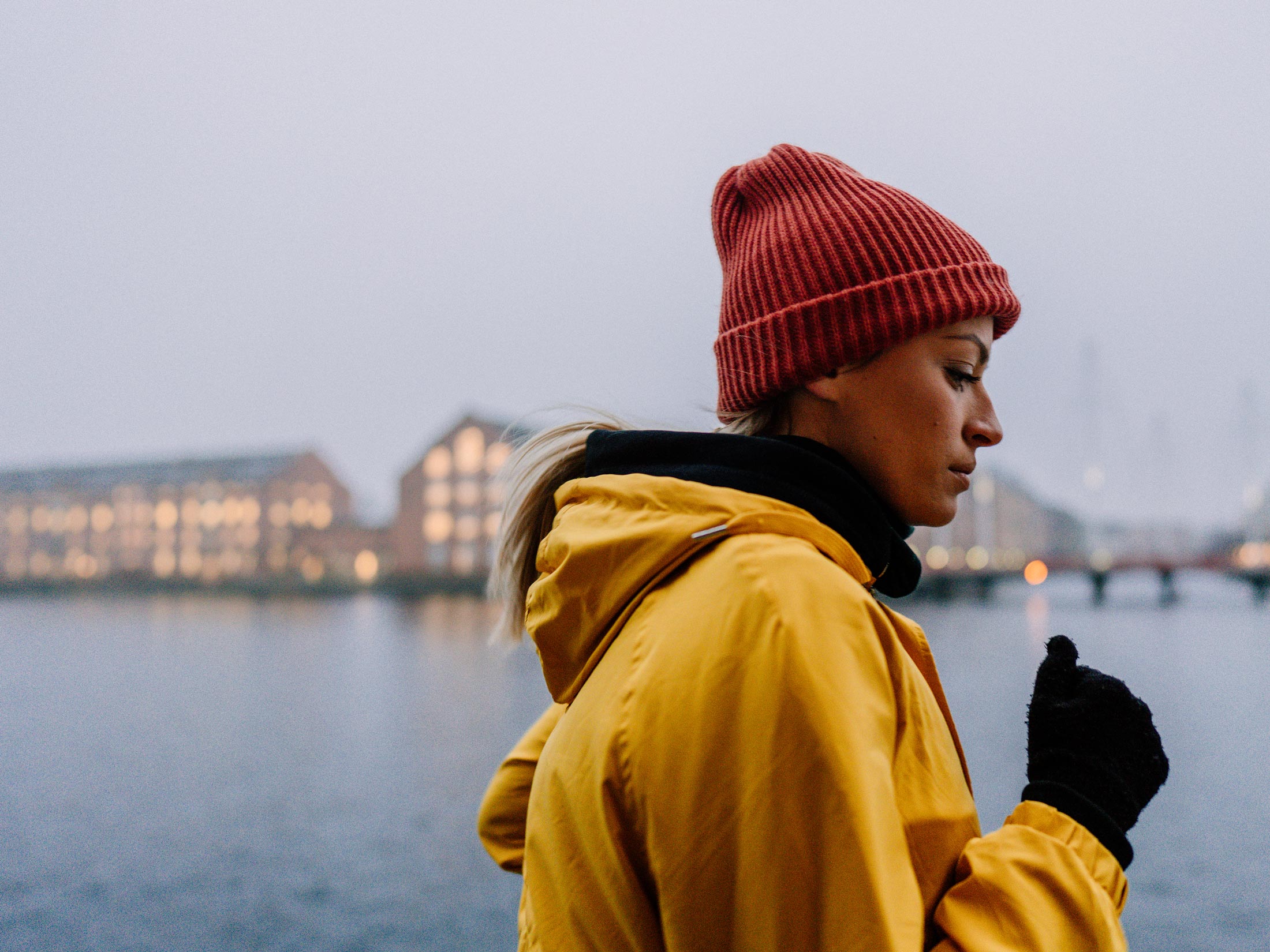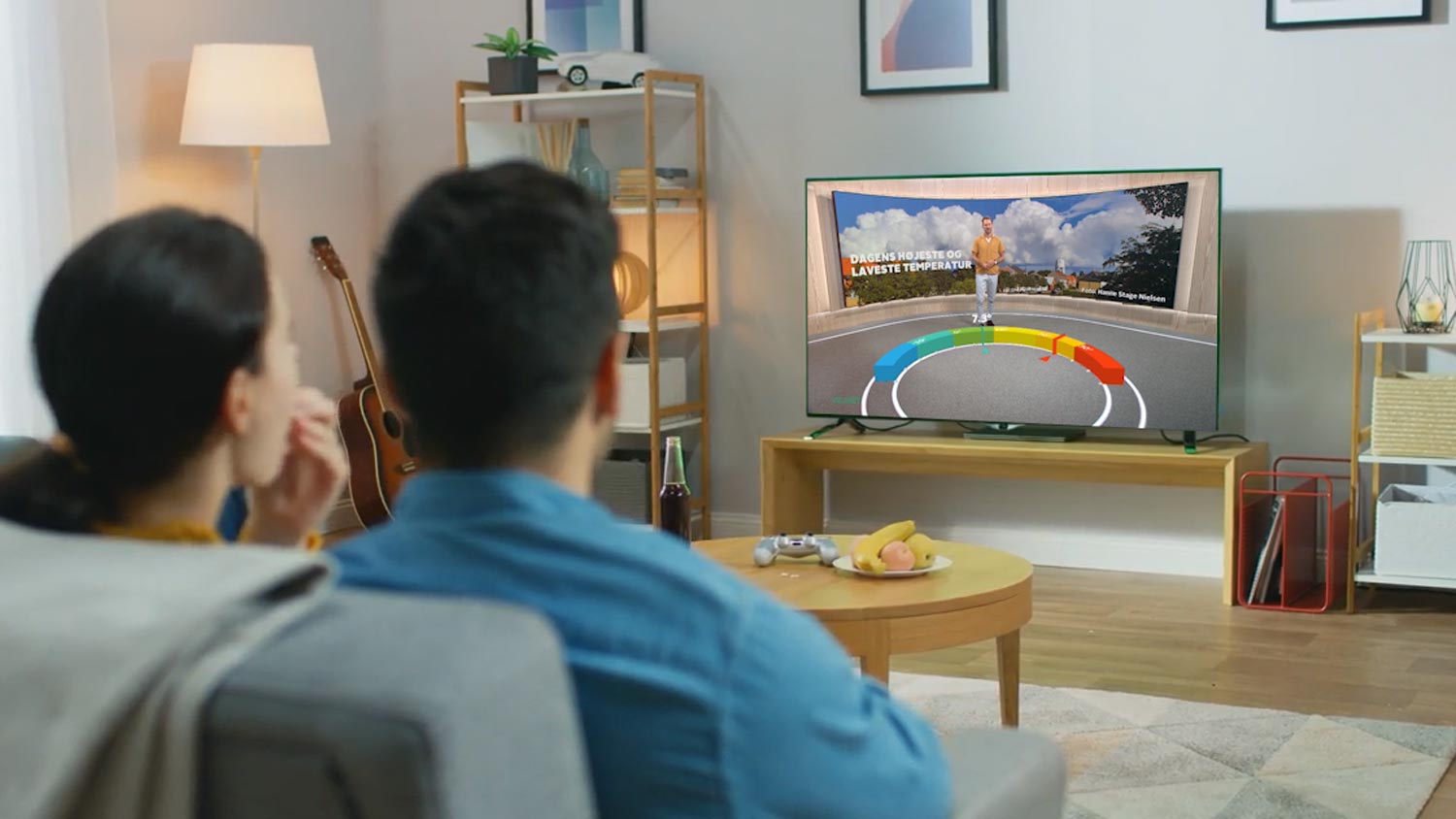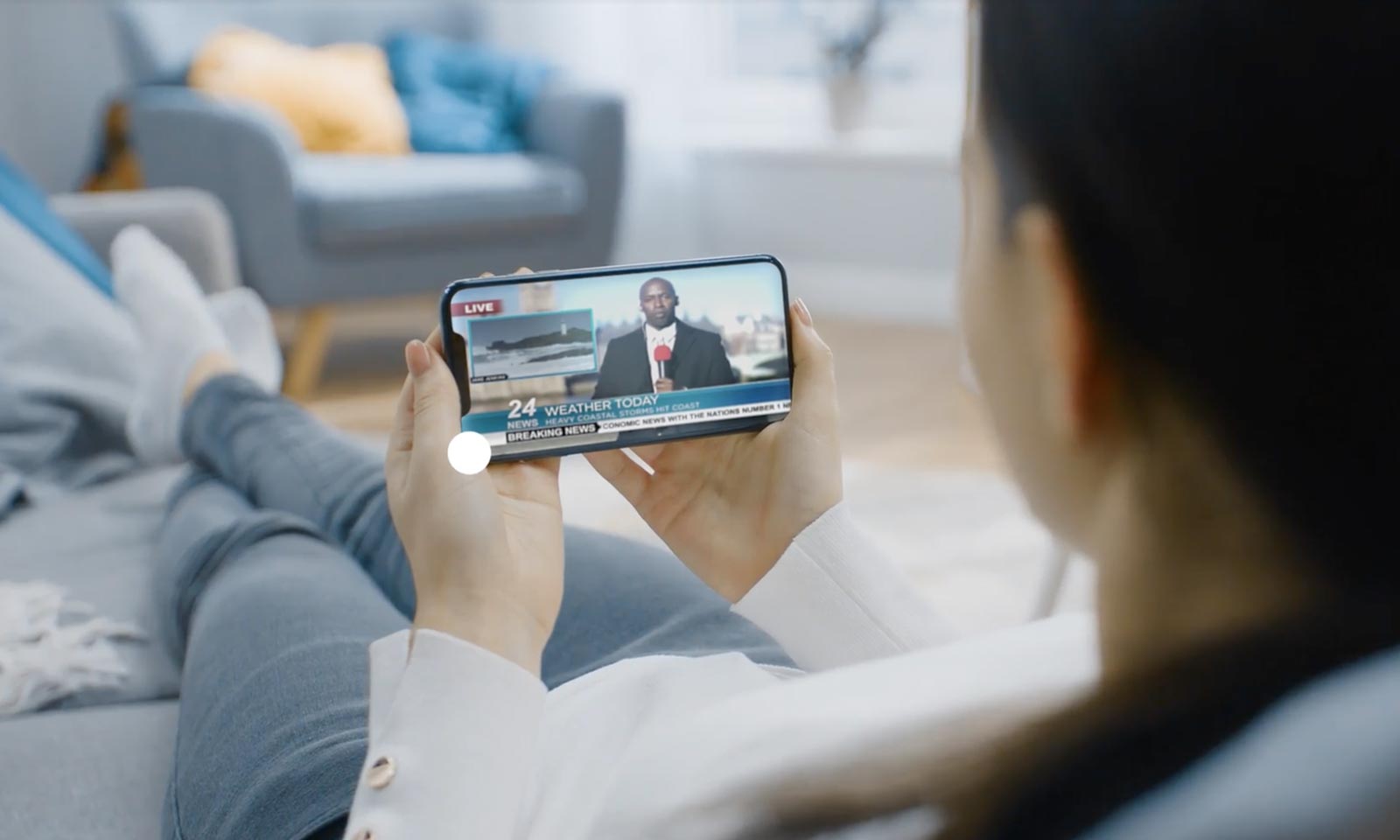Weather intelligence for the future: Crafting a strategic enterprise approach to changing environmental conditions
Continue readingChallenge
TV viewers demand fresh forecasts 24×7
As more TV stations move to a 24-hour news and weather broadcasting cycle, meteorologists and on-air weather personalities must keep their forecasts compelling and up-to-the minute. This requires constant refreshing of graphics for each forecast, sometimes several times an hour. And because TV stations also compete with mobile apps and social networks for viewers’ attention, the task of providing innovative, updated weather forecasts becomes even more challenging.
In 2018, TV 2 Denmark A/S began building a state-of-the-art broadcasting studio for its 24-hour channel, TV 2. A curved, 4K, ultra-high definition (UHD) LED screen would replace its traditional green screen, bringing news and weather graphics to life in brilliant color and definition. The broadcaster took the opportunity to review its weather data providers and systems. The station evaluated the Max Weather platform from The Weather Company which it had used since 2013, against a similar system from the Meteo Group. In addition to providing exceptional functionality and graphics, any future system would need to be user friendly.
Because the Max Weather platform was exceptionally straightforward to use, and because it had already performed well for the broadcaster, TV 2 chose to retain the solution from The Weather Company for its future broadcasting needs. It also chose to enhance the system’s performance with several new features that would attract and retain viewership for the station.
Solution
Technology enhances weather forecasts
In 2013, TV 2 Denmark A/S had chosen the Max Weather platform, now offered by The Weather Company, as its weather forecast delivery solution for its TV 2 channel. Over the course of five years, the broadcaster added additional modules from the Max Weather family of solutions to enhance its forecasting and on-air delivery capabilities. These modules included the Max Storm and Max Sky solutions.
Additionally, adding Max Social in 2015 allowed TV 2 to quickly upload pictures and videos to its social media channels. The further addition of the iCast forecast engine to the Max Weather platform in 2015 meant that TV 2 could build site-specific forecasts using the solution’s numerical models and statistical processing to create a final, localized forecast.
Andreas Nyholm has been a meteorologist and forecaster at TV 2, Denmark’s largest television network, for approximately 10 years. In that time, he has seen firsthand how the Max Weather platform has evolved to meet the needs of the station and its viewers. “We’ve moved from static graphics to animations that have a lot more detail,” he says. “We do a lot of variations on one forecast so we can show the weather in different ways over the course of four or five broadcasts an hour.”
In 2018, when TV 2 chose to retain the Max Weather platform as its weather forecast and studio engine, The Weather Company helped the broadcaster upgrade the system’s hardware to enhance performance and improve system graphics. Simultaneously, TV 2 chose to add the Max Reality solution to its Max Weather ecosystem. Max Reality software allows TV 2 to create 3D AR graphics to demonstrate various weather phenomena. In a first-in-the-industry deployment, The Weather Company team added 4K performance capabilities to Max Reality to allow TV 2 to fully capitalize on its new 4K curved LED screen. The station began using Max Reality at the end of 2019.
Also in 2019, TV 2 began implementing the Local Data Ingest solution from The Weather Company. This feature allowed the network to further pinpoint its forecasts by pulling locally sourced data into the Max Weather system.

Results
Delivering industry-leading weather graphics with 3D AR
By upgrading its Max Weather platform to align with its studio transformation, TV 2 laid the groundwork for industry-leading innovation in weather broadcasting. The network noticed an immediate improvement in speed, responsiveness and performance after the platform upgrade, which was a prerequisite to the installation of the Max Reality solution.
“Max Weather is agile and fast to work with, and that’s important because every news station needs to do more, in less time,” states Nyholm. “I’m not a graphics guy, but I can still create an explainer for an earthquake or tsunami event in 15 or 20 minutes.”
The TV 2 installation is the industry’s first 4K deployment of the Max Reality solution. The Weather Company team worked with TV 2 to refine and launch the 4K capability of Max Reality, whose 3D graphics already add an even greater dimension to the broadcast. When using Max Reality, the meteorologist or presenter can walk around or even stand in the middle of the AR simulation while explaining the 3D weather simulation.
How TV 2 uses Max Reality to create augmented reality
Max Reality lets meteorologists quickly and seamlessly create exceptional, audience-grabbing 3D AR graphics. “The graphics department often compliments the Max Reality graphics; they’re really impressed with the system,” says Nyholm. “Creating them is not hard work, because all the forecast data is automatically added.” Viewers also laud the new graphics, according to Nyholm. “They say the images look more natural, for example that the clouds animate in a more natural way than when we use normal grid data.”
TV 2 currently uses the Max Reality solution a few times a week, but plans to use it with greater frequency as time passes. For example, by working with the station’s graphics department, Nyholm can create AR images that can be reused and modified. “For instance, we’ll create a rainbow graphic and use it many times in the next five years to explain why and how a rainbow forms,” he says. “When it’s done properly in AR and correctly imported into the system, it can easily be tweaked to a double rainbow or a halo, for instance.”
Viewer engagement is critical to broadcasters who now compete with mobile news outlets and apps for the same audience. Max Social technology allows TV 2 to interact with viewers around the clock. “Max Social is very nice if we have a severe weather warning,” says Nyholm. “We post simultaneously on Facebook and Twitter.” The solution also reduces the time needed to import pictures that viewers post on the station’s social channels. TV 2 can download those images directly into the Max Weather system to use in its broadcasts, keeping viewers engaged on air and off air.
In addition to providing more engaging broadcasts and social media, TV 2 is constantly improving its forecasts to provide more accurate information to its audience. When it fully implements the Local Data Ingest solution, the network will be able to use the more granular data from national weather institutes to create forecasts down to one or two kilometers. “Of course, we’ll want to display that,” says Nyholm. “That’s one reason we’re moving forward with Local Data Ingest.”
In mid-2020, The Weather Company expects to release Max Weather 7.0, which will allow Max Sky graphics to be implemented in the AR layer. This will allow TV 2 to display clouds in an even more realistic 3D rendering.

About TV 2 Denmark A/S
First launched in 1988, TV 2 is now the largest TV channel in Denmark, offering around-the-clock news and weather programming. Its parent company, TV 2 Denmark A/S, is owned by the Danish government and financed through advertising and subscription revenues. TV 2 Denmark A/S has annual revenues of approximately DKK 2.8 billion and has approximately 1,300 employees located in Odense and Copenhagen.
Let’s talk
To learn more about the The Weather Company solutions featured in this story, contact our experts today.
Contact us




